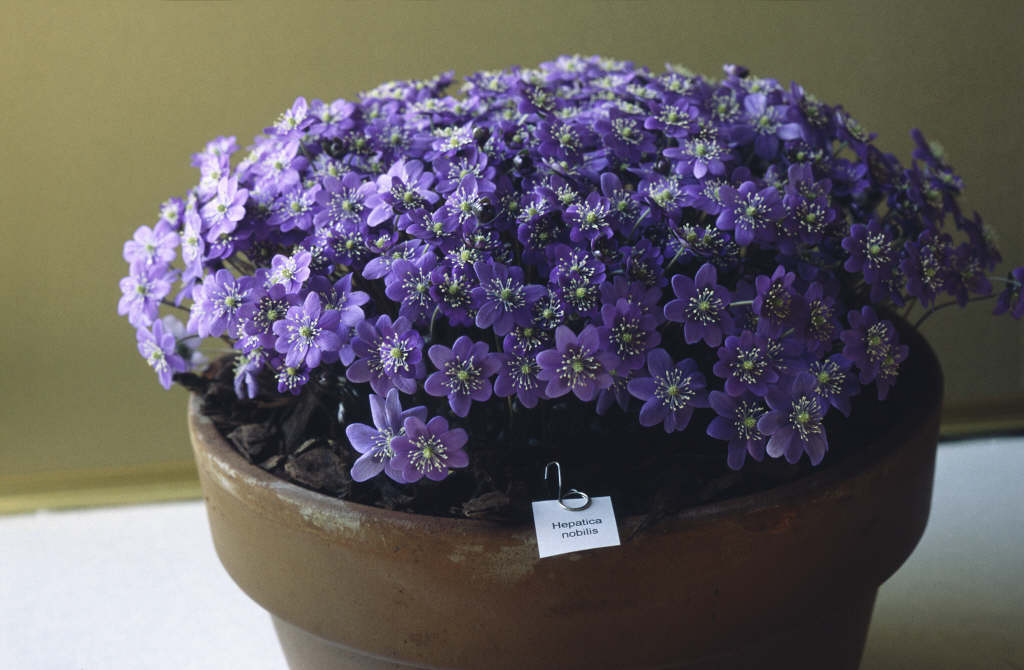Hepatica nobilis
liverleaf
A slow-growing herbaceous perennial to 10cm, with kidney-shaped, three-lobed leaves, often with silvery marbling above, and solitary violet or purple flowers with conspicuous white stamens appearing in early spring
Other common names
crystal wortivy flower
see moreliver balsam
liver moss
common hepatica
commone liverleaf
golden trefoil
herb Trinity
kidney wort
mayflower
noble liverwort
squirrel cups
Synonyms
Anemone hepatica L.Hepatica triloba
Size
Ultimate height
Up to 10cmTime to ultimate height
2–5 yearsUltimate spread
0–0.1 metreGrowing conditions
Moisture
Moist but well–drainedpH
Alkaline, NeutralColour & scent
| Stem | Flower | Foliage | Fruit | |
| Spring | Purple | Green Grey Silver | ||
|---|---|---|---|---|
| Summer | Green Grey Silver | |||
| Autumn | Green Grey Silver | |||
| Winter | Green Grey Silver |
Position
- Partial shade
Aspect
East–facing or South–facing or West–facing
Exposure
Exposed or Sheltered Hardiness
H6Botanical details
- Family
- Ranunculaceae
- Native to GB / Ireland
- No
- Foliage
- Semi evergreen
- Habit
- Bushy, Clump forming
- Genus
Hepatica are small, clump-forming perennials with 3 to 5-lobed, semi-evergreen leaves and anemone-like, blue, violet, pink or white flowers in early spring
- Name status
Correct
- Plant range
- Europe, Asia
How to grow
Cultivation
Grows well in humus-rich soils and thrives in heavier soils. Top dress annually in autumn with leaf mould. Resent root disturbance
Propagation
Propagate by seed sown in an open frame, as soon as ripe, or by division in spring. Transplants and divisions are slow to establish
Suggested planting locations and garden types
- City and courtyard gardens
- Cottage and informal garden
- Rock garden
- Patio and container plants
- Underplanting of roses and shrubs
- Flower borders and beds
- Garden edging
Pruning
No pruning required
Pests
Diseases
Generally disease-free
Get involved
The Royal Horticultural Society is the UK’s leading gardening charity. We aim to enrich everyone’s life through plants, and make the UK a greener and more beautiful place.
